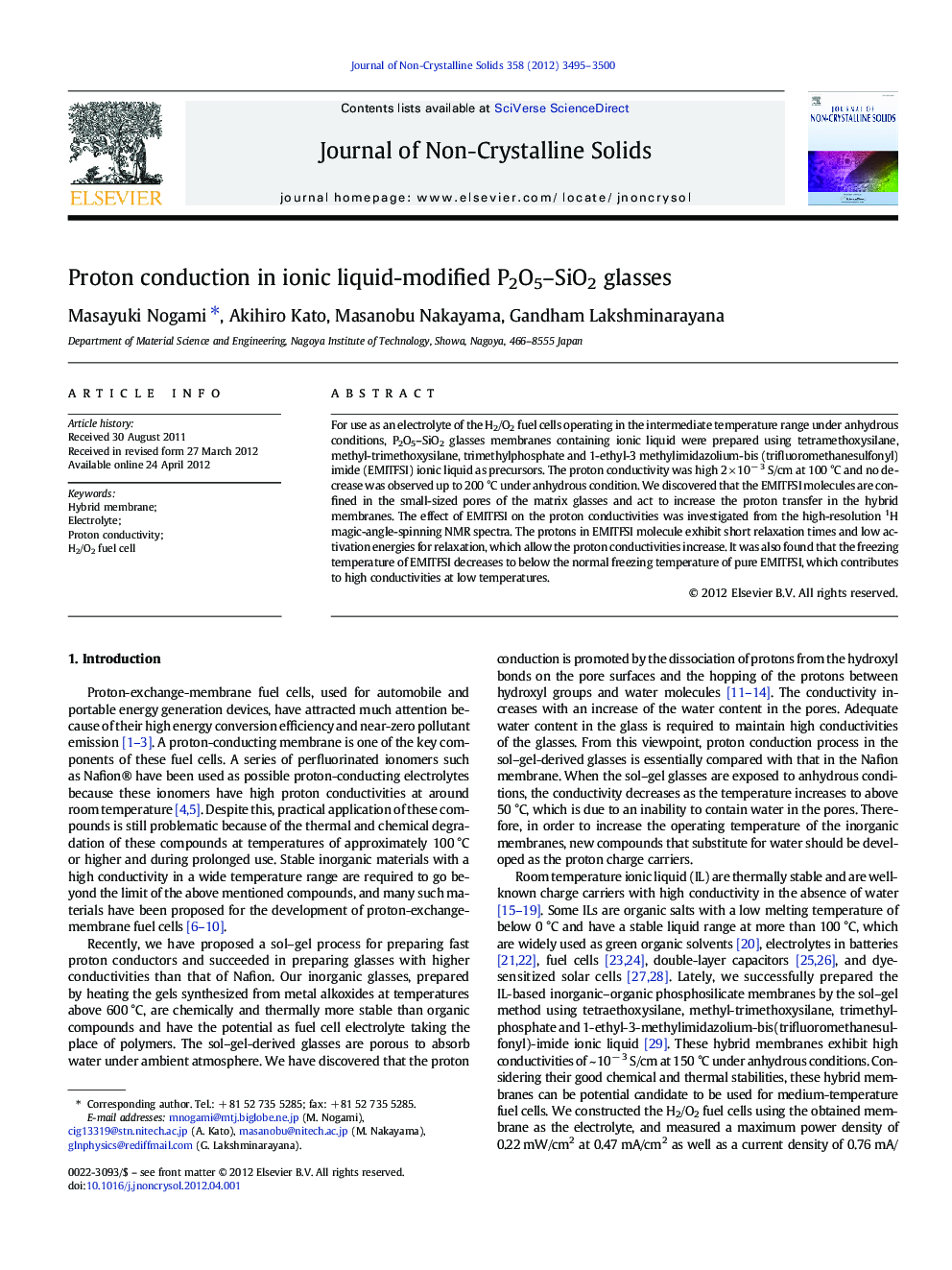| Article ID | Journal | Published Year | Pages | File Type |
|---|---|---|---|---|
| 1481497 | Journal of Non-Crystalline Solids | 2012 | 6 Pages |
For use as an electrolyte of the H2/O2 fuel cells operating in the intermediate temperature range under anhydrous conditions, P2O5–SiO2 glasses membranes containing ionic liquid were prepared using tetramethoxysilane, methyl-trimethoxysilane, trimethylphosphate and 1-ethyl-3 methylimidazolium-bis (trifluoromethanesulfonyl) imide (EMITFSI) ionic liquid as precursors. The proton conductivity was high 2 × 10− 3 S/cm at 100 °C and no decrease was observed up to 200 °C under anhydrous condition. We discovered that the EMITFSI molecules are confined in the small-sized pores of the matrix glasses and act to increase the proton transfer in the hybrid membranes. The effect of EMITFSI on the proton conductivities was investigated from the high-resolution 1H magic-angle-spinning NMR spectra. The protons in EMITFSI molecule exhibit short relaxation times and low activation energies for relaxation, which allow the proton conductivities increase. It was also found that the freezing temperature of EMITFSI decreases to below the normal freezing temperature of pure EMITFSI, which contributes to high conductivities at low temperatures.
► Fuel cell electrolyte was prepared by incorporating ionic-liquid in inorganic glass. ► Proton conductivity was achieved to ~ 10− 2 S/cm at 200 °C under anhydrous condition. ► High proton conduction was related to short relaxation times and low activation energies of ionic liquid molecules confined in the small-sized pores.
